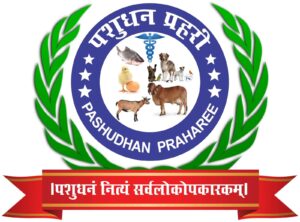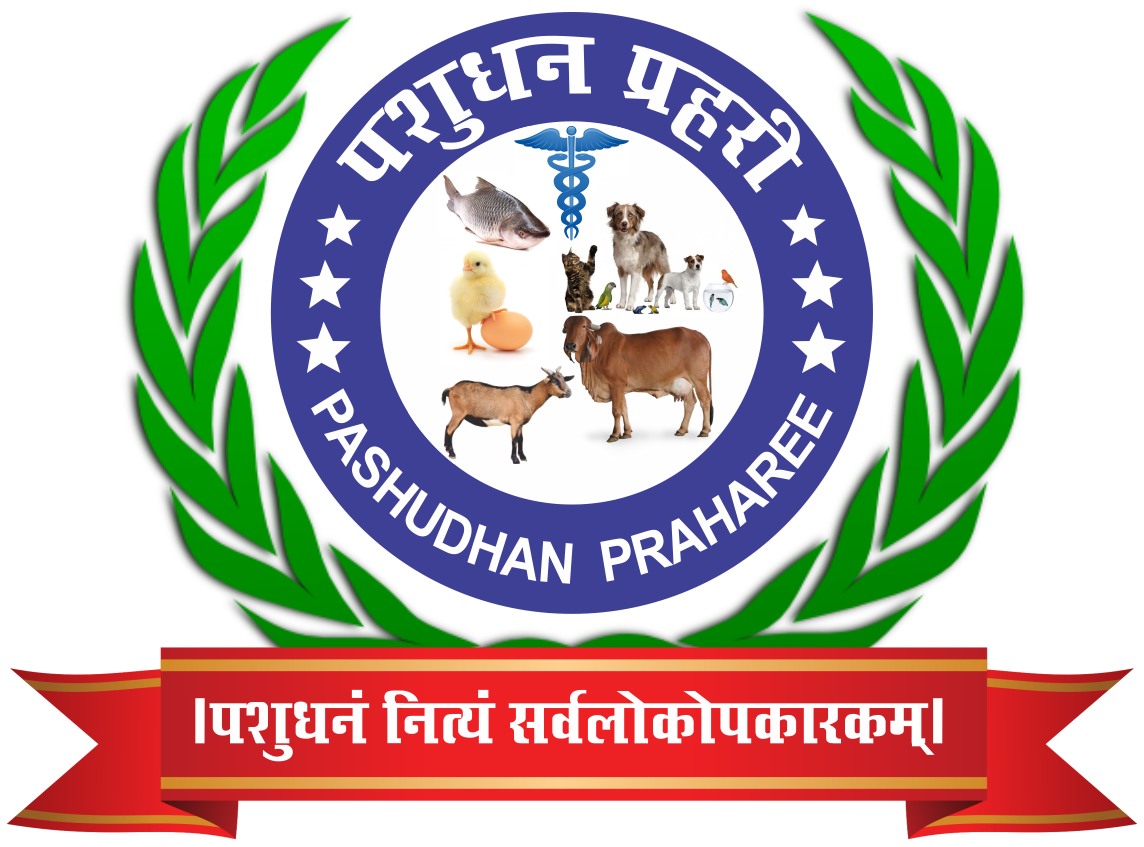Impact of Homeopathic Treatment on Dairy and Poultry Farming: A Cost-Effective Alternative
N Dalai1 * and S Shekhar2
1Department of Veterinary Physiology, C.V.Sc & A.H., O.U.A.T, Bhubaneswar-751003, India.
2Technical Service Officer, Green Micro Lab, Bhubaneswar, India.
*Author for correspondence
Introduction:
Homoeopathy, founded by German physician Samuel Hahnemann, is based on three key principles: dilution of doses, drug testing on healthy individuals, and the similia principle. The similia principle suggests that substances causing symptoms in healthy individuals can trigger healing processes in patients with similar symptoms. Hahnemann’s concept of “potentization” proposed that a remedy’s curative properties increase with dilution, a notion that challenges scientific understanding. Despite this, some modern practitioners have attempted to incorporate scientific methods and new technologies into homoeopathic practice. The Academy of Veterinary Homoeopathy, established in 1995, comprises veterinarians dedicated to using homoeopathic medicine for animal health. Homoeopathic remedies, derived from chemical, animal and botanical sources have gained popularity in veterinary medicine globally. These alternative treatments have shown promise in addressing bacterial and parasitic diseases in food animals. Advantages of homoeopathic medicines include their non-disease-causing nature, minimal side effects, small required doses, ease of administration and cost-effectiveness. They can be used in conjunction with allopathic drugs or vaccines to mitigate adverse effects or enhance recovery. Homoeopathic remedies can be administered internally or externally, with optimal results typically achieved through internal administration.
Within the scientific community and veterinary practice, the use of homeopathy in food-producing animals is highly controversial. However, there is evidence that homeopathic remedies are widely used in these animals. In veterinary medicine, homoeopathy is becoming more and more popular as an alternative therapeutic method. Creating customized treatments for common animal illnesses and enhancing delivery systems for increased effectiveness have been the main goals of recent advancements in this discipline. Some veterinarians report excellent results in clinical settings, especially for stress-related and behavioral difficulties in animals, despite the scientific community’s continued disagreement over homeopathy’s effectiveness. To fully assess the potential of homoeopathic therapies in veterinary care, thorough, well-designed studies are essential.
Homeopathy as a potential cost-effective alternative in the dairy and poultry sectors:
Homoeopathy has emerged as an alternative approach to disease prevention in the dairy and poultry industries, garnering attention for its potential benefits. Homoeopathic treatments can enhance product quality, reduce antibiotic usage and improve overall animal health. Some farmers have reported positive outcomes when using homoeopathic preparations to address common ailments such as respiratory issues in poultry and mastitis in dairy cows. Researchers have explored the use of homoeopathic nosodes, which are derived from disease products, excretions, secretions or pathogenic agents to prevent and treat infectious diseases in livestock. These nosodes are considered homoeopathic medicines when prepared according to official homoeopathic pharmacopoeia standards. However, the principles of homoeopathy, which involve highly diluted substances, face criticism for lacking a plausible mechanism of action. While some studies suggest potential benefits, more robust research is necessary to conclusively establish the efficacy and safety of homoeopathic treatments in livestock and poultry production.
Dairy sector:
Homeopathic treatment has emerged as a promising alternative to conventional veterinary medicine in dairy farming. This holistic approach offers a more natural method for managing animal health, potentially reducing reliance on antibiotics and synthetic drugs. While antibiotics can be effective, they often come with adverse side effects that may negatively impact long-term treatment. In contrast, homeopathic remedies, such as nosodes are easy to administer and have minimal side effects. These treatments aim to regulate bodily functions and promote overall health. Dairy farmers implementing homeopathic practices have reported improvements in herd health, increased milk production and a reduction in common ailments like mastitis and reproductive issues, including fertility disorders and retained placenta around parturition. Research has shown promising results in treating chronic endometritis using specific homeopathic complex remedies, further supporting the potential benefits of this alternative approach in dairy farming.
Homeopathy has gained attention in dairy farming as a potential alternative to conventional treatments for reducing stress, increasing milk production and managing diseases in cows. Proponents argue that homeopathic remedies, which are highly diluted substances, can help balance the animal’s energy and promote overall well-being without the risk of chemical residues in milk. Some farmers have reported positive results using remedies such as Aconitum napellus for sudden stress, Argentum nitricum for anticipatory anxiety, Pulsatilla for udder inflammation, Calcarea carbonica for improving overall health and milk quality, and Phytolacca decandra for mastitis prevention. The growing popularity of “antibiotic-free” or “raised without antibiotics” products has led many farmers and veterinarians to consider homeopathy as a substitute for antibiotics in treating farm animal illnesses, particularly in organic and biodynamic farming where antibiotic use is prohibited. Bovine mastitis, a prevalent ailment in dairy production is one area where homeopathy is being explored as an alternative to antibiotics especially given concerns about bacterial resistance. However, it is important to note that the efficacy of homeopathic treatments in animal husbandry remains a subject of ongoing research and debate within the scientific community.
Poultry sector:
Homeopathic medicine has gained attention as a potential growth promoter in the poultry sector, offering an alternative to conventional antibiotics and growth-enhancing substances. Homeopathic remedies can improve overall health, improve feed conversion rates, boost immune system of poultry, potentially reducing the incidence of diseases and enhance growth rates in poultry without the risks associated with antibiotic resistance or chemical residues in meat products. Homeopathic treatments are claimed to improve egg-laying rates in hens and hence improve overall productivity. Homeopathic treatments may help manage stress in poultry, potentially improving overall flock health. Homeopathic remedies are generally less expensive than conventional medications.
The global demise of the poultry business is largely due to bacterial, viral, parasitic, and protozoal diseases. High mortality, reduced production, and high medical expenses are only a few of the significant economic losses brought on by these highly deadly diseases. Few homoeopathic treatments have been utilized to treat a variety of illnesses in chickens. In poultry, Arsenicum album is used as a homoeopathic medicine for digestive issues like diarrhoea, while carbo vegetabilis is used to boost immunity and treat general weakness. Teucrium marum verum and Cina are used to treat tapeworm infestation, Kali phos is used to treat cloacal prolapse, etc. Without hesitation, homoeopathic medication can be used to cure and prevent diseases in poultry. It is possible to create homoeopathic medication using the naturally occurring plant parts, such as roots, stems, leaves and flowers. It is important to note that the efficacy of homeopathy in veterinary medicine remains controversial and requires further scientific investigation. Farmers considering homeopathic treatments should consult with veterinary professionals and carefully evaluate the available evidence before implementation.
Challenges while treating veterinary animals with homeopathy
Treating veterinary animals with homeopathy presents several challenges. The primary obstacle is the lack of scientific evidence supporting the efficacy of homeopathic remedies in animal care. Veterinarians face difficulties in accurately assessing and interpreting animal responses to homeopathic treatments, as animals cannot verbally communicate their symptoms or improvements. Additionally, the highly individualized nature of homeopathic prescriptions requires extensive knowledge of both homeopathy and animal behavior making it challenging to standardize treatments across different species and conditions Furthermore, there may be ethical and legal issues for practitioners due to the frequently ambiguous regulatory environment around veterinary homoeopathy. The extensive use of homoeopathic methods in animal care may be constrained by several issues, which taken together lead to skepticism in the veterinary community.
Future prospect
The future prospects of homeopathy in veterinary disease diagnosis remain a subject of debate and ongoing research. While some veterinarians and pet owners advocate for homeopathic treatments, the scientific community generally views homeopathy as lacking robust evidence of efficacy. However, as interest in alternative and complementary therapies grows, there may be increased research into homeopathic approaches for veterinary diagnosis. Future developments could potentially focus on integrating homeopathic principles with modern diagnostic techniques, exploring potential synergies between conventional and homeopathic methods and conducting more rigorous clinical trials to evaluate the effectiveness of homeopathic remedies in animal health. Additionally, advancements in technology and data analysis may allow for more sophisticated studies of homeopathic treatments and their effects on animal physiology. Nonetheless, the acceptance and integration of homeopathy in mainstream veterinary medicine will likely depend on the outcomes of such research and the ability to demonstrate consistent, reproducible results in disease diagnosis and treatment.
Conclusion:
The implementation of homeopathic treatments in dairy and poultry farming has demonstrated significant potential as a cost-effective alternative to conventional methods. This approach has shown promising results in improving animal health, reducing the reliance on antibiotics and enhancing overall farm productivity. By addressing common health issues and boosting immune function, homeopathic remedies have contributed to decreased veterinary expenses and increased profitability for farmers. Homoeopathy presents a practical and profitable alternative for sustainable livestock management in the dairy and poultry industries, even though more study is required to completely comprehend the long-term effects and optimize treatment regimens.
References:
Braun A. (1995). Methodik der Homöopathie: Leitfaden für die Ärztekurse in homöopathischer Medizin, 5th ed., Sonntag Verlag, Stuttgart.
Doehring, C.,and Sundrum A.(2016). Efficacy of homeopathy in livestock according to peer-reviewed publications from 1981 to 2014.
MIDAN MARKETING (2014). Antibiotics and growth hormones: the consumers mind set. http://midanmarketing.com/consumers-case/antibiotics-and-growth-hormones/.Accessed november 15, 2016.
Mohammed, B. R., and Sunday, O. S. (2015). An overview of the prevalence of avian coccidiosis in poultry production and its economic importance in Nigeria. Veterinary Research International, 3(3), 35-45.
Nayak D, Varanasi R. (2020). Homoeopathic nosodes, a neglected approach for epidemics: A critical review. Indian J Res Homoeopathy. 14:129-35.
Samad M.A., Husnain M., Sarfraz M.S., Qureshi M. A., Ali H, Rehman H., Ijaz U., Khan M., and Tariq A. (2024). Homeopathic Medicine for Treating Various Diseases of Poultry. Complementary and Alternative Medicine: Botanicals/Homeopathy/Herbal Medicine. Unique Scientific Publishers, Faisalabad, Pakistan, 49-56.
Uluocak, A. (2023). Menopausal period and homeopathy: a review. Journal of Controversies in Obstetrics and Gynecology and Pediatrics, 46-50.
World Health Organization. Safety Issues in the Preparation of Homeopathic Medicines. Geneva: World Health Organization; 2009. p. 63.
Zeise, J., and Fritz J. (2019). Use and efficacy of homeopathy in prevention and treatment of bovine mastitis. Open Agriculture. 4: 203–212.



